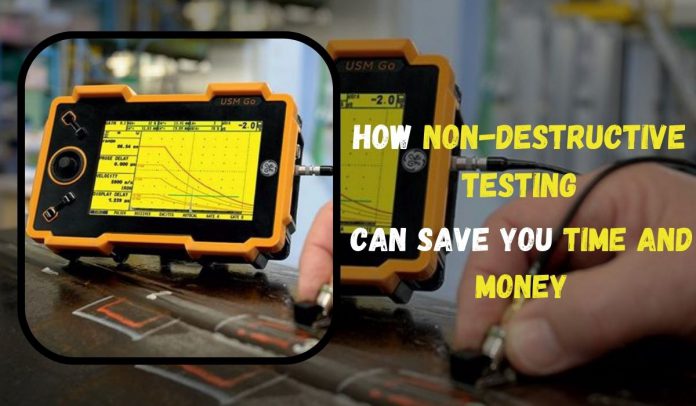Non-destructive testing (NDT) is a critical process that helps manufacturers detect product flaws and defects without damaging them. This technique can save time and money during product development and production, making it a valuable investment for any manufacturing company. In this blog, we’ll explore how non-destructive testing lab can save you time and money in product development.
What is Non-Destructive Testing?
Non-destructive testing is a method of evaluating materials and components to detect defects or flaws without damaging them. This technique is essential in industries such as aerospace, automotive, and construction, where the safety and reliability of products are paramount. NDT involves using various technologies such as ultrasound, radiography, and electromagnetic testing, among others.
How Non-Destructive Testing Saves Time and Money
Non-destructive testing can save you time and money in several ways, including:
Early Detection of Flaws and Defects
Non-destructive testing can detect flaws and defects in products early, reducing the likelihood of costly rework or product failures later on. By identifying issues early on, manufacturers can take corrective action before releasing the product into the market, saving time and money.
Improved Quality Control
NDT is a crucial part of quality control in manufacturing. By using non-destructive testing, manufacturers can ensure that products meet the required quality standards, reducing the likelihood of product failures and recall. This helps to save time and money by reducing the need for rework and the costs associated with recalls.
Reduced Material Waste
Non-destructive testing can help reduce material waste in manufacturing. By identifying product flaws and defects early on, manufacturers can avoid using faulty materials and reduce material waste. This helps to save money and reduce the environmental impact of manufacturing.
Increased Efficiency in Testing
Non-destructive testing is a faster and more efficient way of detecting product flaws and defects than traditional testing methods. This saves time and money by reducing the time required to test products, allowing manufacturers to bring products to market more quickly.
The Role of Non-Destructive Testing Labs
Non-destructive testing labs play a crucial role in product development and quality control. These labs are equipped with advanced NDT technologies and trained personnel who can accurately detect flaws and defects in products. By outsourcing NDT to a lab, manufacturers can save time and money by avoiding purchasing and maintaining expensive NDT equipment and training personnel.
Benefits of Outsourcing Non-Destructive Testing
Outsourcing non-destructive testing to a reputable NDT lab can provide several benefits, including:
Access to Advanced NDT Technologies
NDT labs are equipped with advanced NDT technologies, which can accurately detect flaws and defects in products. By outsourcing NDT to a lab, manufacturers can access these technologies without incurring the costs of purchasing and maintaining NDT equipment.
Trained Personnel
NDT labs employ trained personnel who are experts in the field of non-destructive testing. By outsourcing NDT to a lab, manufacturers can benefit from the expertise of this personnel without having to train their personnel.
Cost Savings
Outsourcing non-destructive testing can save manufacturers money by reducing the need to purchase and maintain NDT equipment, train personnel, and invest in quality control measures.
Importance of Non-Destructive Testing in Different Industries
Non destructive testing is used in various industries such as aerospace, automotive, construction, and manufacturing. In the aerospace industry, NDT is used to detect cracks and corrosion in aircraft components such as engines, wings, and landing gear. In the automotive industry, NDT is used to detect defects in engine components, suspension systems, and body panels. In the construction industry, NDT is used to detect flaws in concrete structures, bridges, and pipelines. In the manufacturing industry, NDT ensures the quality of products such as welds, castings, and forgings.
Types of Non-Destructive Testing
There are various types of non-destructive testing techniques used in industries. Some of them are:
Ultrasonic Testing – This technique uses high-frequency sound waves to detect material defects.
Radiographic Testing – This technique detects material defects using X-rays or gamma rays.
Magnetic Particle Testing – This technique involves using magnetic fields to detect surface and subsurface defects in materials.
Liquid Penetrant Testing – This technique involves using dye or fluorescent penetrants to detect surface defects in materials.
Visual Testing – This technique involves visual inspection to detect defects in materials.
Conclusion
In conclusion, non-destructive testing is a critical process that can save manufacturers time and money during product development and production. By detecting flaws and defects in products early on, improving quality control, reducing material waste, and increasing efficiency in testing, NDT can help manufacturers bring products to market more quickly and reduce the costs associated with recalls and rework. By outsourcing non-destructive testing to a reputable NDT lab, manufacturers can access advanced NDT technologies, trained personnel, and cost savings.



